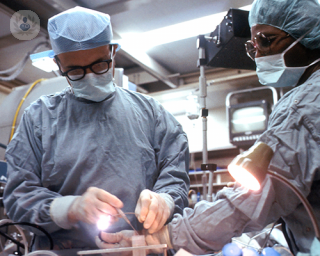Transcatheter aortic valve implantation (TAVR)
Mr Ahmed Othman - Cardiothoracic surgery
Created on: 05-26-2017
Updated on: 08-10-2023
Edited by: Sophie Kennedy
What is transcatheter aortic valve implantation (TAVR)?
TAVR is a minimally-invasive procedure used to repair the aortic valve that fails to open properly by inserting a tube into the damaged part. It is performed on patients who have aortic valve stenosis and who have been considered too high-risk for open-heart surgery.

What is aortic valve stenosis?
Aortic valve stenosis (or aortic stenosis) is one of the most common heart valve diseases. It is the narrowing of the aortic valve opening, which restricts the blood flow from the left ventricle to the aorta. This may affect the pressure in the left atrium, therefore, meaning the blood flow from your heart into the main artery of your body is restricted and your heart will have to work harder to pump blood in your body.
Symptoms of aortic stenosis include chest pain with activity, feeling faint and dizzy with activity, shortness of breath, fatigue and heart palpitations.
What happens during TAVR?
Normally, an aortic valve replacement is performed with open-heart surgery in cases of aortic stenosis. For those who are considered a high-risk for surgery, however, a TAVR is the safer alternative. During the procedure, the surgeon will insert a catheter into your leg or chest and guide it to your heart.
A replacement valve made from cow or pig tissue is then inserted through the catheter and guided to the heart. In some cases, a balloon may be used to expand the valve. Once the valve has been inserted, the doctor will remove the catheter.
What can I expect after the procedure?
You will spend roughly two to five days in the hospital recovering from the procedure. Following the operation, you will need regular follow-ups with your doctor to monitor your progress. You might need to take blood-thinning medications (coagulants) regularly after TAVR to prevent further blood clots.
Artificial heart valves can become infected with bacteria, which mostly come from the mouth. Excellent dental hygiene is important to prevent any bacterial infections. Your doctor will discuss this with you and also about the importance of other lifestyle changes such as regular exercise and a heart-healthy diet.
What are the results of TAVR?
TAVR may relieve the symptoms of aortic stenosis and improve your quality of life.







